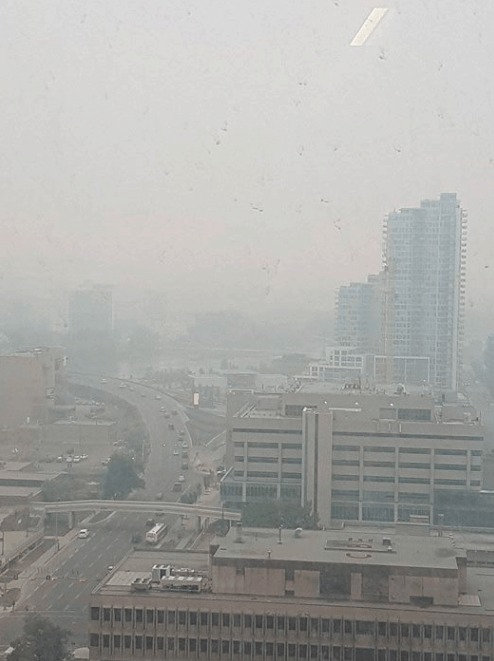A friend just sent me this photograph taken this morning in downtown Calgary, Canada. It’s tough to see much of the city because of wildfire smoke from wildfires burning in Canada.
Just the other day Trump’s Interior Secretary blamed the wildfires on “environmental terrorist groups” and claimed we could prevent wildfires if it wasn’t for “frivolous lawsuits” from “radical environmentalists.”
Over the past twenty years, the U.S. Timber Industry and plenty of politicians have looked north to Canada for an example of the type of public lands logging system they’d like to see in America. (Ironically while some of these right-leaning U.S. politicians love the Canadian public lands logging system, that love of the Canadian system doesn’t extend to things like, basic universal health care, where they say we need a ‘uniquely American system’ [in which people and families are bankrupted and destroyed if someone simply gets sick.]) But I digress….
It’s well understood that in Canada the timber industry logs (and essentially controls) vast swaths of public lands.
Since that’s the case, why are there so many wildfires in Canada? Why is it so smokey in Calgary this morning?

I don’t think that anyone is saying “wildfires will go away if timber harvesting is allowed”. I think we have always been careful, at least here, to say that (1) wildfires have always occurred/will always occur in the west at least, (until we convert all those acres to housing or agriculture, which seems unlikely) (2) to keep people’s houses and communities and infrastructure from burning up, it is wise to have manage fuels, at least in some areas (3) if you can make money and satisfy demand for building materials at the same time instead of it costing money to manage fuels, that would be a good thing. Wildfires are not going to go away, but fuel treatments can make them more manageable.
Maybe it’s in their language. For example, do they call their massive clearcuts “fuel reduction, restoration or healthy forests?” They could take a page from the USFS playbook on that score….look what the language is doing for us…….no more wildfires here, right?
Of course, there are different forests and different management going on up there. Comparisons are disingenuous.
Ironically, both Zinke and Perdue said the exact things that preservationists have wanted them to say, to give them more ammunition to attack the idea of “active management”. No, forests are not “crops”. No, we cannot “prevent wildfires”. I’m sure there are lots of foresters out there who would rather see their bosses say something more accurate and less ‘partisan’.
Frankly, here in California, eco-groups don’t have blanket opposition to the kind of “active management” going on in the Sierra Nevada. The only problem with thinning is that there isn’t enough of it (and followed by prescribed burning). A few groups still irrationally desire a landscape unaffected by humans.